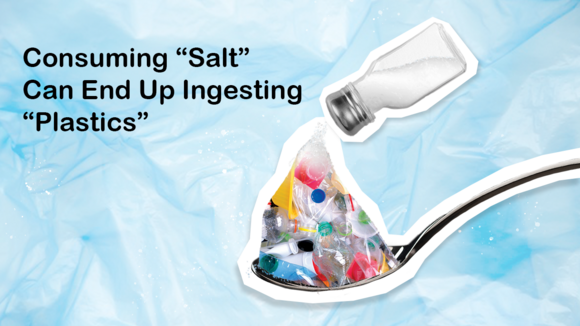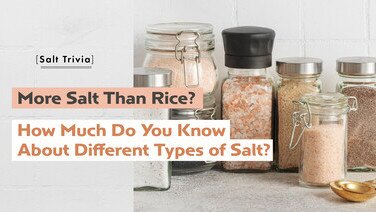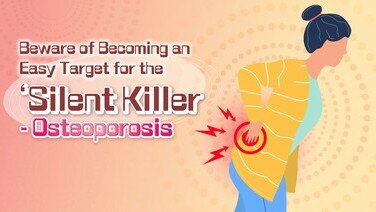What is microplastic?
According to an article from the European Food Safety Authority (EFSA) in 2016, microplastics are mixtures of particles in various shapes and types, including fragments, fibres, spheres, pellets, granules, films and microbeads with size ranging from 0.1 to 5,000 micrometres(μm). Microplastics can be further divided into two types: primary and secondary.
- Primary microplastics: plastics that are directly manufactured into the intended size, e.g., microbeads contained in cleansing scrubs.
- Secondary microplastics: plastic fragments that are created from the breaking down of larger plastic products through processes such as wave erosion, photodegradation and biodegradation.
In the edible salts that were found to contain microplastics, the two most commonly found substances are poly(methyl methacrylate) (PMMA) and polypropylene (PP).
Where do plastics in our food come from?
Regardless of the type, microplastics are similar to sediments and zooplanktons in terms of size and shape, and thus cannot be completely eliminated by the existing sewage treatment systems. Microplastics can therefore be ingested by marine organisms and enter the food chain. At the same time, plastic food packaging also represents another possible source of microplastics.
In the test samples of edible salts mentioned above, the microplastics found may have come from contaminated raw materials or the products’ plastic packaging. If the contamination comes from raw materials, then it may also be related to other factors such as level of contamination, utilization and recycling rate of various plastic products and the stability of their chemical structures under different heat level, UV exposure and oxidation level.
The effects of microplastics on us
The microplastics in food are capable of absorbing harmful chemical substances and releasing their own additives. While currently it is still inconclusive in relation to microplastics’ effects on human bodies, prolonged intake of these chemical substances would certainly do no good to our bodies.
How to eliminate microplastics from our food?
The simplest way is to tackle the root cause. If we can adhere to the principle of sustainable consumption by reducing the use of plastic products or switching to degradable plastic products, or explore measures such as expanding the plastic bags levy and increasing recycling rates etc, we would be able to reduce the harmful effects brought by plastic pollution on the environment and all creatures. This would ultimately benefit us all.
If you still do not have an idea on how often microplastics can be found in our food, you may refer to the article: “Metallic Contaminants Detected in More than 60% of Edible Salts Presence of Micro-plastics in 20% of Sea Salts Showing Urgent Need for Plastic Reduction”. CHOICE Magazine, Issue 522. The Consumer Council tested certain edible salts in the market, and from the results we realize that we simply cannot overlook the impact of environmental pollution.






![[Baby Snacks Guide] Who Says Snacks Can’t Be Healthy?](/f/guide_detail/415742/376c212/bb%20snack.jpg)



![[Handwashing Cold Knowledge] Debunking 4 common handwashing myths](/f/guide_detail/409326/376c212/43_4%E5%80%8B%E6%B4%97%E6%89%8B%E5%B8%B8%E8%A6%8B%E8%BF%B7%E6%80%9D_Eng.jpg)
